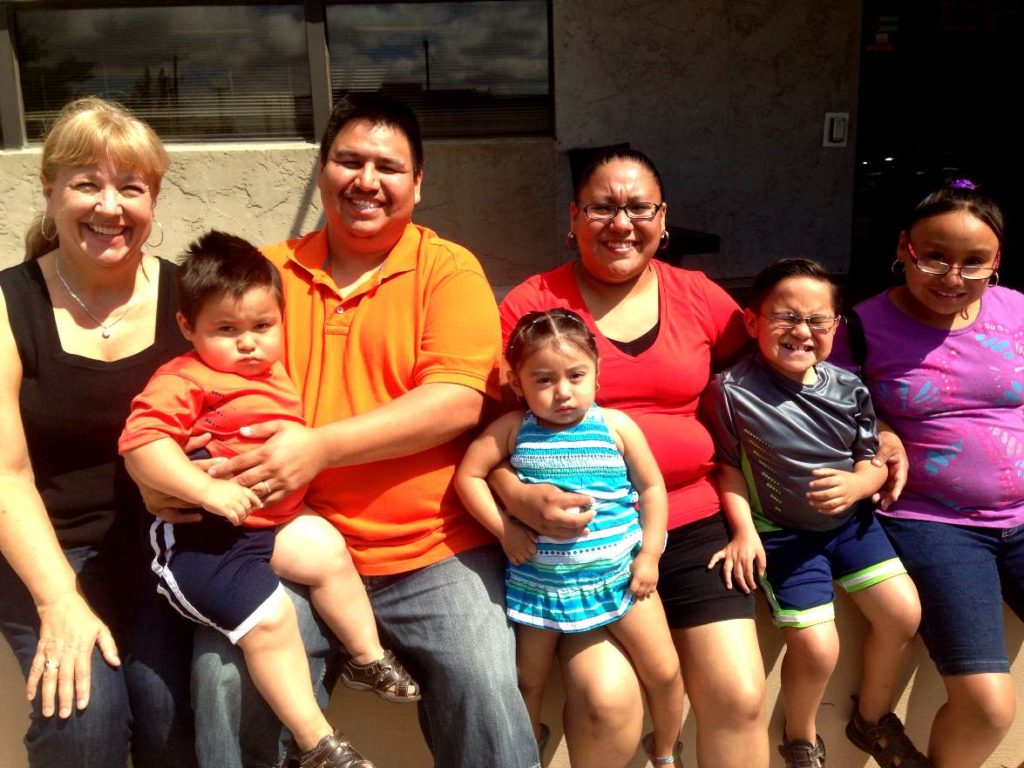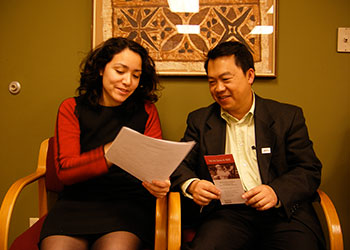News > ILCM In The News
As DACA turns five, a future for DREAMers
Posted on Jun 13 2017

Legal assistant Gail Martinson works full-time on Deferred Action for Childhood Arrivals — DACA at the Immigrant Law Center of Minnesota (ILCM). Since 2012, she has helped more than 1,200 Minnesota DREAMers apply for DACA status or renewal, and other ILCM staff and volunteers have helped even more DACA applicants. With DACA approaching its fifth anniversary on June 15, she recalls helping some clients apply for the DACA status, then apply for renewal two years later, and then apply for a second renewal.
To understand DACA, imagine growing up in Minneapolis, going to school, playing softball and soccer at the park, and dreaming of college one day. Then, when you are fifteen and eager for drivers’ ed classes, you discover that you are different. You don’t have a social security number. You find out your family’s big secret: you and your parents are undocumented. They brought you across the border when you were three years old. Because you are undocumented, you cannot get a drivers’ license. You cannot legally work. You cannot go to college. If the immigration police find you, you will be sent back to a country you do not know at all. And there is no way to fix this.
For hundreds of thousands of young people who came to the United States as children, that was life before DACA. They called themselves DREAMers, as in the American Dream, the dream that they shared but that was legally out of reach.
One of Gail Martinson’s early clients was valedictorian of her class, “a brilliant mind who just had to stop.”
“Her educational life was over because she couldn’t go to college,” Gail recalls. “She was out of school for two or three years before DACA and now she has been able to re-enroll in school.”
Before DACA, Gail says, “So many kids – especially young men – just dropped out. There was no reason to graduate from high school. DACA has given these kids a reason to stay in school and graduate.”
The DREAMers organized and asked Congress to pass the DREAM Act, to give them a path to legal residence and citizenship. They explained, over and over, that they felt Minnesotan, or Iowan, or Californian, that they felt American. Congress would not listen.
So, in 2012, President Barack Obama established DACA — Deferred Action for Childhood Arrivals —by executive order. While only Congress can make laws establishing routes to permanent legal residence, the president’s executive order granted some protection for DREAMers. Deferred action is a use of prosecutorial discretion, not a grant of lawful status.. Deferred action means a promise that, even though the government could prosecute and deport a DREAMer, it would not do so — at least for a specific period of time, for those who went through the application and screening process and paid hundreds of dollars in fees.
On June 15, 2012, the Department of Homeland Security announced the rules for DACA — undocumented immigrants who came to the U.S. before the age of 16, had resided in the U.S. since June 2007 and met other requirements could request consideration of deferred action for a period of two years. In 2014, DHS announced rules for a two-year renewal, and in 2016, for another two-year renewal. More than 750,000 young people applied for and received DACA protection.
In a survey of ILCM clients, DREAMers described the life-changing impact:
I feel that I can now live a better life. I am able to work legally and I think that DACA almost takes a load off your shoulders. Personally, I don’t have to feel ashamed when I apply for a job now. DACA has made me a more confident, empowered individual.
DACA has had a positive impact on my life. Before, I didn’t make enough money and was worried about how I would provide for my family. Thanks to DACA, I was able to obtain my GED. After that, I took a nursing assistant course and a trained medication aide course. I passed both and found out I enjoy helping people. As a result, I took another course and I am now an Emergency Medical Technician. I will be working in the ambulances saving lives and that has inspired me to achieve more. My next goal is to be a paramedic or something else in the medical field. Without DACA, this would have been impossible.
DACA has provided me hope that even though I’m from a minority, a higher education is still something I can acquire. To me it’s the proof that the United States of America is one of the countries that allows immigrants to have an opportunity to become successful and improves our way of life.
What happens to DACA now, with a new and hostile administration in Washington? Nobody knows for sure. Revocations of DACA status and deportations of DACA recipients have risen sharply. (Read Jessica Colotl’s story here.) President Trump has said different things at different times, sometimes threatening to end DACA entirely and sometimes saying DACA recipients “shouldn’t be worried.
In 2012, almost two-thirds of U.S. adults supported DACA, and public support remains strong.
The current DACA executive order runs out next year. If Trump wants to keep DACA, he will need to issue a new executive order extending the program by June 15, 2018.
UPDATE: On June 15, the fifth anniversary of DACA, the Department of Homeland Security said that, “The June 15, 2012 memorandum that created the Deferred Action for Childhood Arrivals (DACA) program will remain in effect.” The same DHS memorandum officially rescinded DAPA and DACA+, saying that “there is no credible path forward to litigate the currently enjoined policy.” For details, see DACA will stay, but administration says no to DAPA, expanded DACA.




